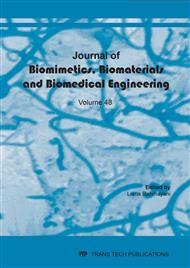p.85
p.92
p.99
p.105
p.111
p.119
p.126
p.134
p.141
The Antibacterial Effect of Soursop Leaf Extract on Staphylococcus aureus ATCC® 25923tm (In Vitro)
Abstract:
Purpose: This study was to determine the Minimal Inhibition Concentration (MIC) and Minimal Bactericidal Concentration (MBC) soursop leaf extract antibacterial activity against bacteria Staphylococcus aureus ATCC® 25923TM at a concentration of 100, 90, 80, 70, 60 and 50%. Method: This study is an experimental laboratory with design Post Test Only Control Group Design by using soursop leaf extract at a concentration of 100, 90, 80, 70, 60 and 50% respectively. Each test is repeated four times to determine the average Minimal Inhibition Concentration (MIC) and Minimal Bactericidal Concentration (MBC). Soursop leaf extract is made by the dilution method using a medium Nutrient Broth (NB) and sub-cultured on Mannitol Salt Agar (MSA). The number of colonies of Staphylococcus aureus ATCC® 25923TM are counted using a manual calculation in the media Mueller Hinton Agar (MHA). Test Kruskkal Wallis there are differences in the antibacterial effect that was significant (p <0.05), soursop leaf extract against Staphylococcus aureus ATCC® 25923TM from each treatment group. Results: The minimum inhibitory concentration was 90% and the minimum bactericidal concentration is 100% committed. The number of colonies of Staphylococcus aureus bacteria ATCC® 25923TM at 100% concentration 0 CFU/mL 90% 234.50 CFU/ml and at concentrations of 80, 70, 60 and 50% could not count the number of colonies due to > 300 CFU/mL. As for the diameter of inhibitory zone at 100% concentration 10,625 mm, 90% 8,875 mm, 6,750 mm 80% and 70%, 60%, 50% reporting no inhibition zone diameter. Conclusion: The p-value of Kruskkal Wallis is p<0,05 which shows that there is a significant difference between the inhibition of soursop leaf extract with a concentration of 100, 90, 80, 70, 60 and 50% on growth of Staphylococcus aureus ATCC® 25923TM. Thus, soursop leaf extract has antibacterial effects against the growth of Staphylococcus aureus ATCC® 25923TM.
Info:
Periodical:
Pages:
119-125
Citation:
Online since:
November 2020
Authors:
Price:
Сopyright:
© 2020 Trans Tech Publications Ltd. All Rights Reserved
Share:
Citation:


